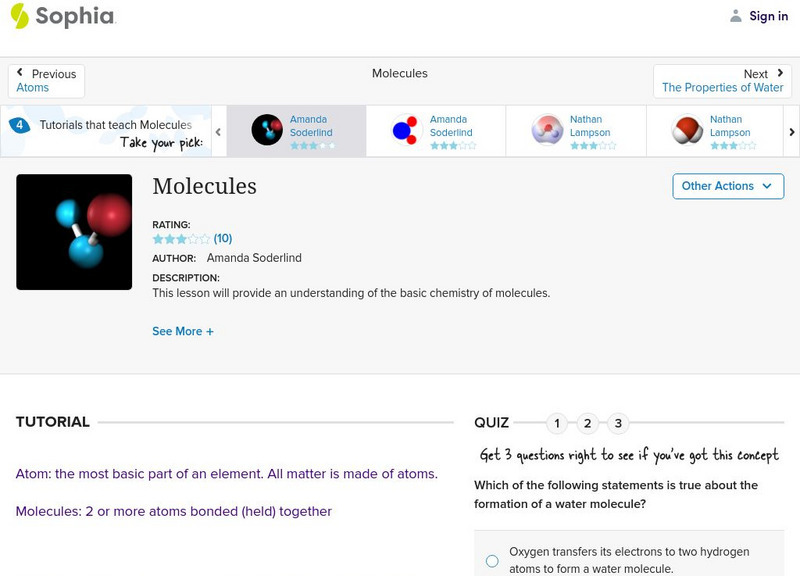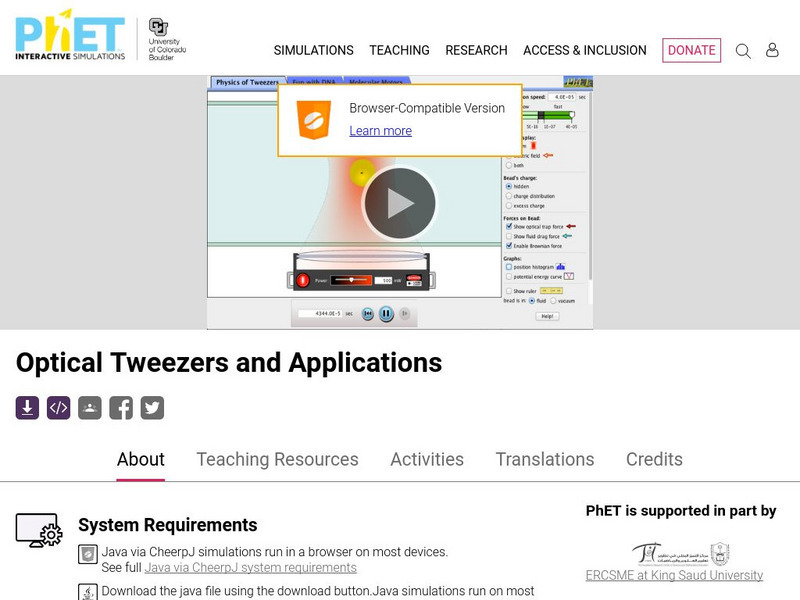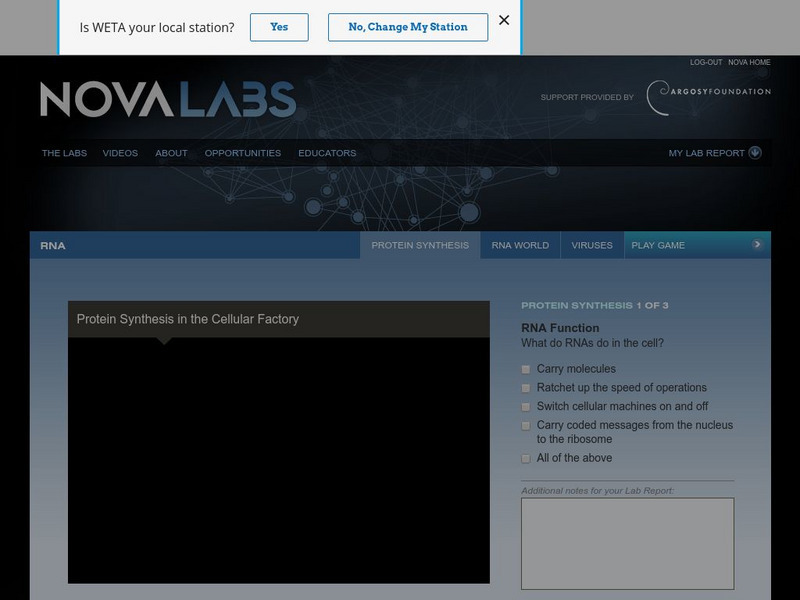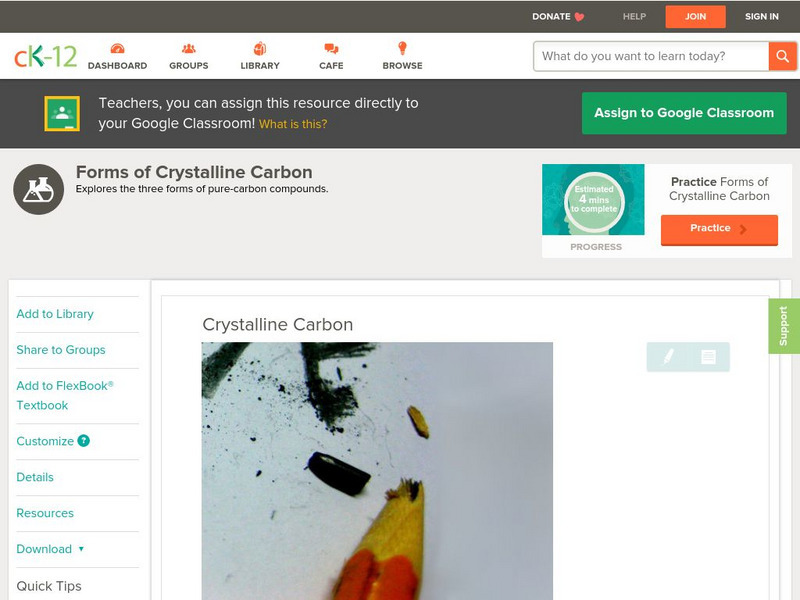US Department of Energy
Thermodynamics—Teacher Guide
I'm so cool! No, you're exothermic. This thermodynamics lab unit includes an introduction, teacher demonstrations, six labs that students rotate through each class day, homework assignments, application of knowledge, and...
BBSRC
Discovering DNA: The Recipe for Life
A pinch of adenine, a dash of thymine and ta-da, you have life! Well, it's not quite that simple, but through this series of activities and experiments young scientists learn about the structure of DNA and how it contains the recipe...
Kenan Fellows
Unit 1: Introduction to Biotechnology
Biotechnology is big! Introduce the uses of biotechnology to science scholars with a fascinating, fact-filled unit. The first installment in a series of four biotechnology units covers the role biotechnology plays in human and...
Intel
Designer Genes: One Size Fits All?
In this STEM group of 10 activities, lesson two focuses on the question, "Just because we can, should we?" when considering genetically engineered food. Classes hear a scenario and, as young scientists and geneticists, must determine if...
Other
E Teaching Assistance Program: Lewis Dot Structure and Molecular Shape
Tutorial outline weaves together resource links which instruct the learner in drawing Lewis dot structures. A pre- and post-quiz are provided, as well as visuals, questions with immediate feedback, and a reading list to help students...
University of Arizona
University of Arizona: Using Computers to Study Molecular Structure
The main objective for this exercise is to enhance your study of the properties and structures of biological molecules with modern computer graphics. Rather than passively viewing illustrations of molecular structure as they occur in...
Concord Consortium
Concord Consortium: Molecular Workbench:an Introduction to X Ray Crystallography
Investigate how we can learn about molecular structure using x-ray crystallography in this module.
Sophia Learning
Sophia: Molecular Structure of Water
A brief introduction to the molecular structure of a water molecule, and the chemical bonding which gives it its unique properties.
Sophia Learning
Sophia: Molecular Structure of Water: Lesson 2
This lesson will introduce the molecular structure of water, including the Hydrogen atoms, Oxygen atoms, and types of bonds. It is 2 of 4 in the series titled "Molecular Structure of Water."
CK-12 Foundation
Ck 12: Molecular Geometry
[Free Registration/Login may be required to access all resource tools.] In this interactive learning module, students will learn a technique to predict molecular geometry based on a molecule's Lewis electron dot structure.
CK-12 Foundation
Ck 12: Lewis Electron Dot Structures
[Free Registration/Login may be required to access all resource tools.] The following online tutorial describes how a covalent bond forms, including the energy change involved in the process.Students will be asked to use the octet rule...
Texas Education Agency
Texas Gateway: Lewis Valence Electron Dot Structures
This tutorial investigates how to draw Lewis valence electron dot structures.
CK-12 Foundation
Ck 12: Biology: Central Dogma of Molecular Biology
[Free Registration/Login may be required to access all resource tools.] Overview of the central dogma of molecular biology.
Concord Consortium
Concord Consortium: Molecular Workbench: Molecular Crystals
A collection of interactive simulations relating to molecular crystals.
Sophia Learning
Sophia: Polarity of Molecular Compounds: Lesson 2
This lesson will demonstrate how to use molecular shape to determine if a molecule is polar or nonpolar. It is 2 of 2 in the series titled "Polarity of Molecular Compounds."
State University of New York
State University of New York: Boiling Points of Simple Organic Compounds
This simulation explores the effects of molecular structure on normal boiling points for a series of related organic compounds.
Sophia Learning
Sophia: Molecules
An audio podcast accompanied by a diagram of a water molecule helps the learner understand molecular structure. [0:23]
Vision Learning
Visionlearning: Atomic Theory and Structure: The Mole: Its History and Use
An introduction to the mole, a unit of measurement that quantifies atoms and molecules.
TED Talks
Ted: Ted Ed: The Invisible Motion of Still Objects
Ran Tivony describes how and why molecular movement occurs and investigates if it might ever stop. [4:44]
Davidson College
Davidson College: Network Solids: Crystalline Solids
Explains the differences between ionic, molecular, metallic, and network crystalline solids. Displays structures for diamond, graphite, fullerene, and silica, accompanied by questions about their chemical bonding. Electron density plots...
University of Colorado
University of Colorado: Ph Et Interactive Simulations: Optical Tweezers and Applications
Did you ever imagine that you can use light to move a microscopic plastic bead? Explore the forces on the bead or slow time to see the interaction with the laser's electric field. Use the optical tweezers to manipulate a single strand of...
PBS
Pbs: Nova Labs: Protein Synthesis in the Cellular Factory
Watch short animations, read informational text, and make hypotheses about different aspects of protein synthesis.
Science Education Resource Center at Carleton College
Serc: Bioinformatics
This project is a series of interrelated modules designed to introduce the student to modern biological techniques in the area of bioinformatics. Bioinformatics is the application of computer technology to the management of biological...
CK-12 Foundation
Ck 12: Physical Science: Crystalline Carbon
[Free Registration/Login may be required to access all resource tools.] Discusses different crystalline forms of carbon and their molecular structure.
Other popular searches
- Molecular Structure Lab
- Mineral Molecular Structure
- Building Molecular Structure
- Molecular Structure of Water
- Molecular Shape of Compounds
- Giant Molecular Structure
- Atomic and Molecular Structure
- Lewis Structure Molecular






















